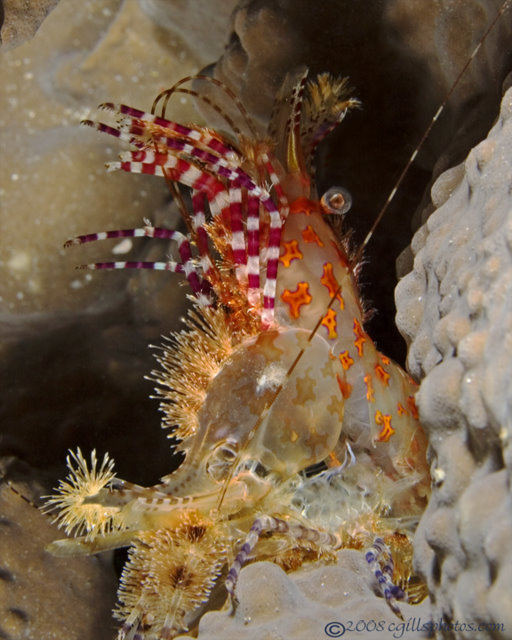
 |
|---|
|
Image © Cindy Abgarian SARON SHRIMP I had seen photographs of these bizarre, but strikingly beautiful shrimp displayed in magazines and in Indonesian dive shops. It wasn’t until doing some pre-trip marine critter research that I discovered that they are not commonly seen. Due to the fact I really enjoy finding and photographing crustaceans, this was a much sought after image for me. I had found one last year in Lembeh, but the one image I got left much to be desired. I had entered the water of our night dive at Manukang, off Suanggi Island, with a bit of disappointment. Our muck dives had revealed such a vast display of strange and intriguing marine critters, and now for a change we were doing a reef night dive. So, as opposed to looking for the bits of color and movement across a rather barren, dark muck landscape, we were being faced with prowling the healthy reefs in search of our subjects. Critters in the coral had the advantage of being able to find numerous ways and means to escape our night time torches. Navigation is also a bit more difficult in unknown territory. That being said, I decided to stick fairly close to the DM Made, hoping that his younger eyes, and familiarity with the terrain, might yield better results. More life for me to photograph and better chances of finding the boat, I figured. It wasn’t until the return home and seeing the photo media on the computer screen that I saw the behavior that was going on under our noses that night. The one female I had chosen to stay with to photograph had been in the process of molting her shell. This is a behavior I had witnessed once previously, with an Arrow Crab, while diving Turtle Reef on Grand Cayman. Along with the fact that this particular species of Saron Shrimp has yet to be named, I was alerted to a photo tip - they will usually retreat from direct light. I can definitely confirm that.
|
|---|